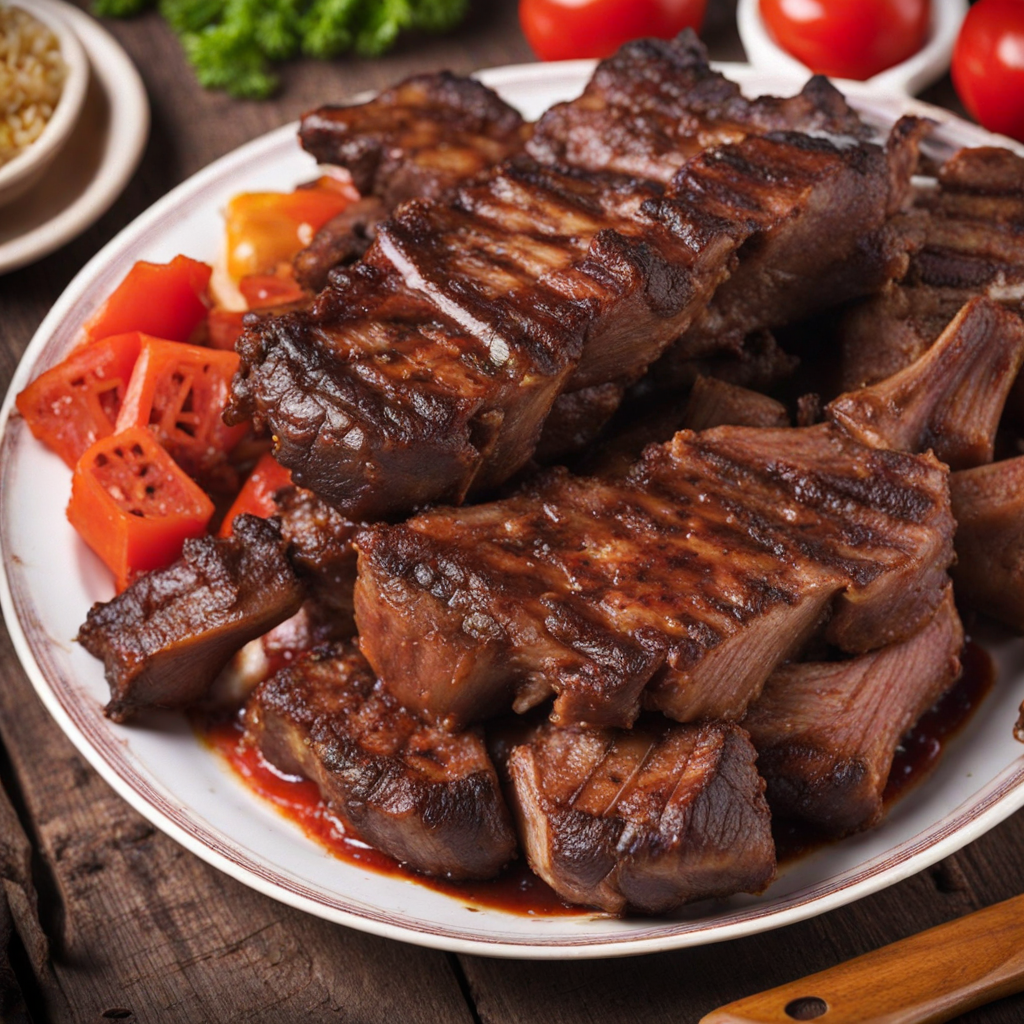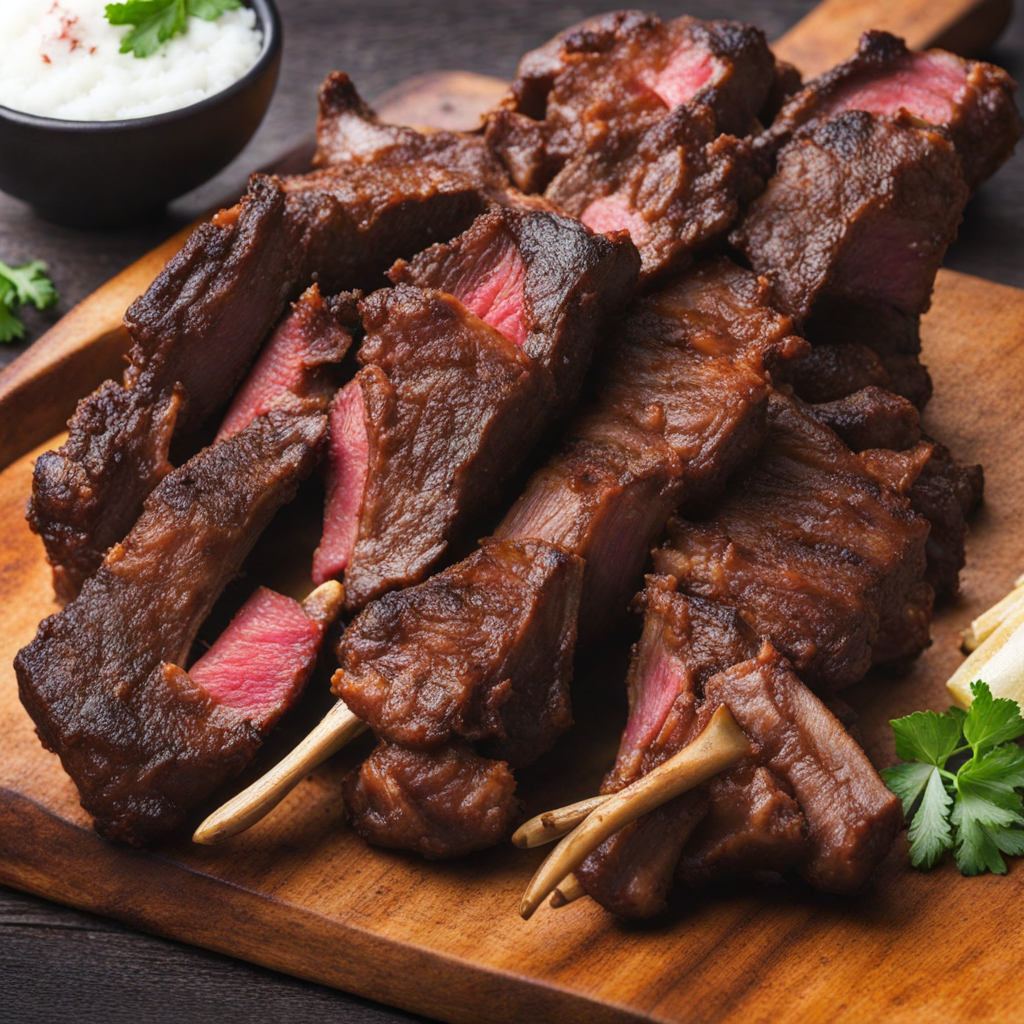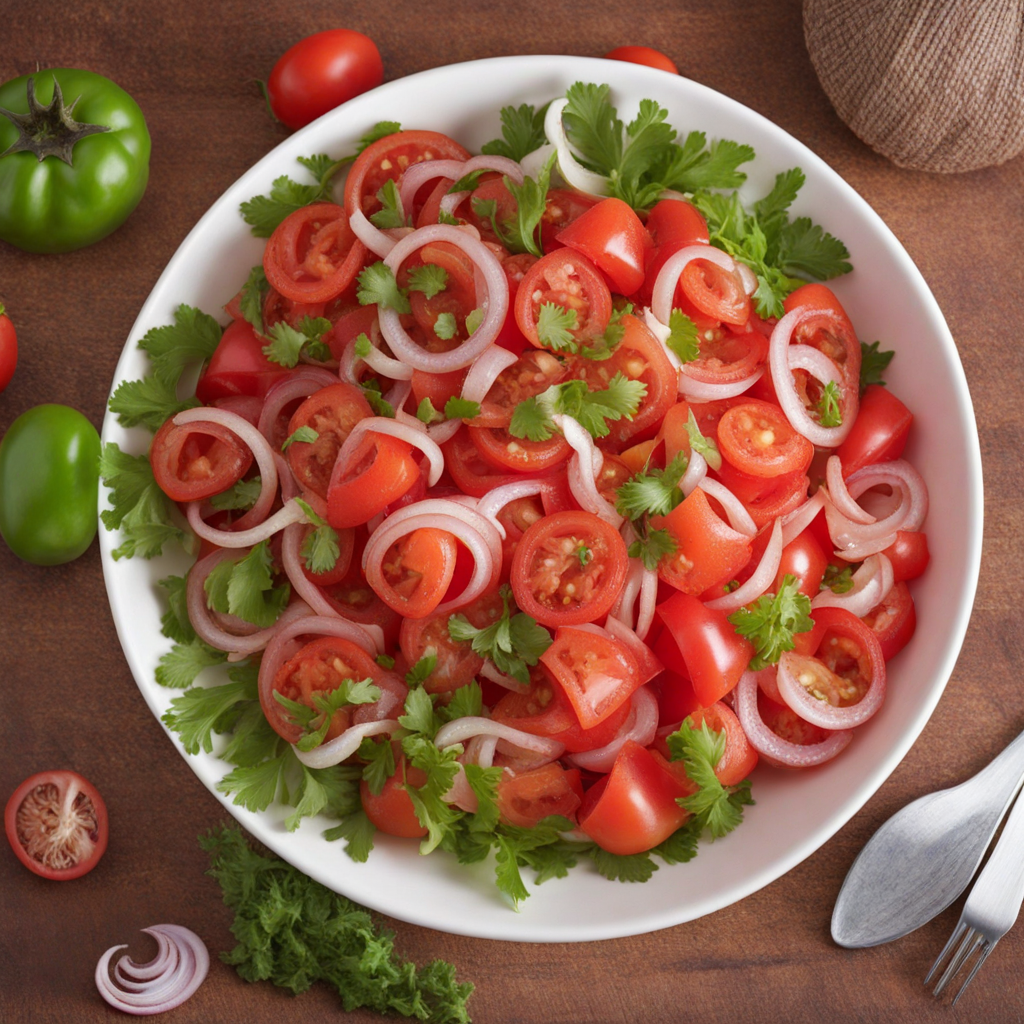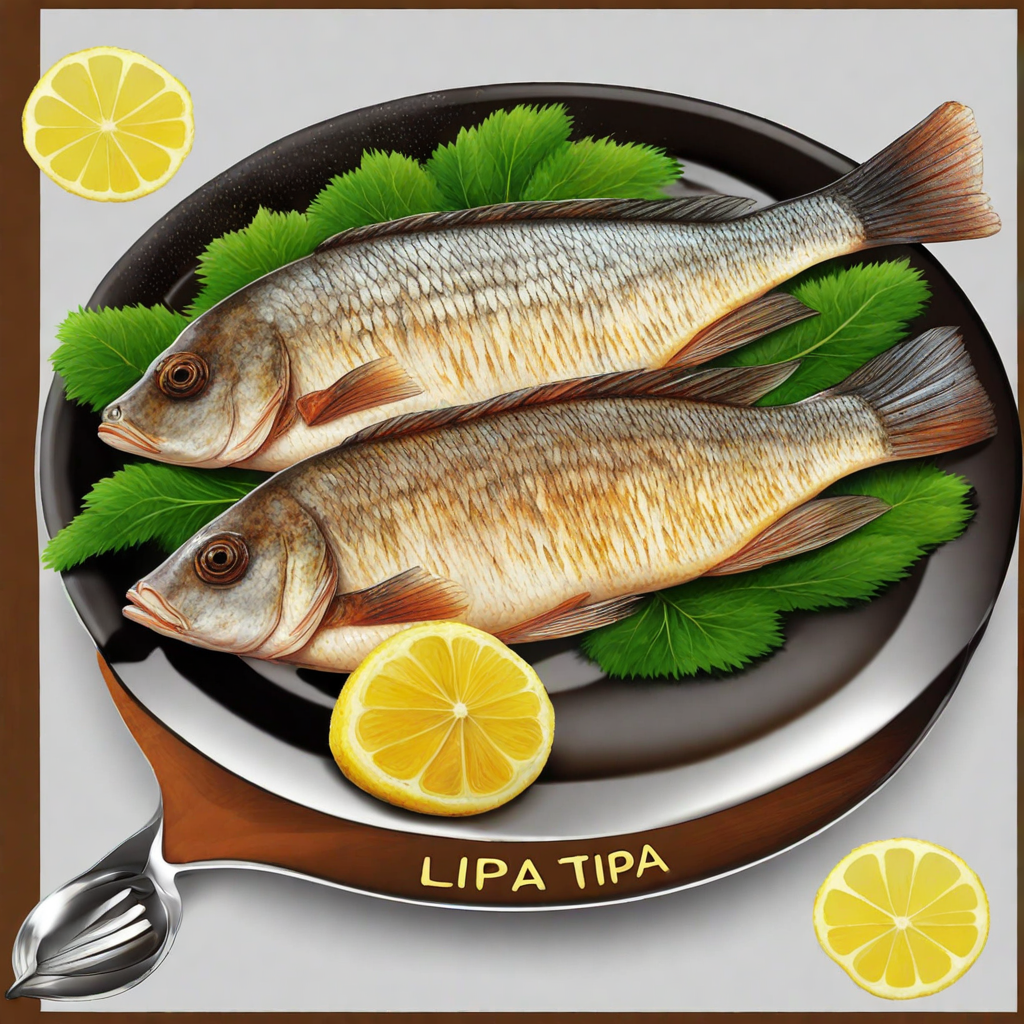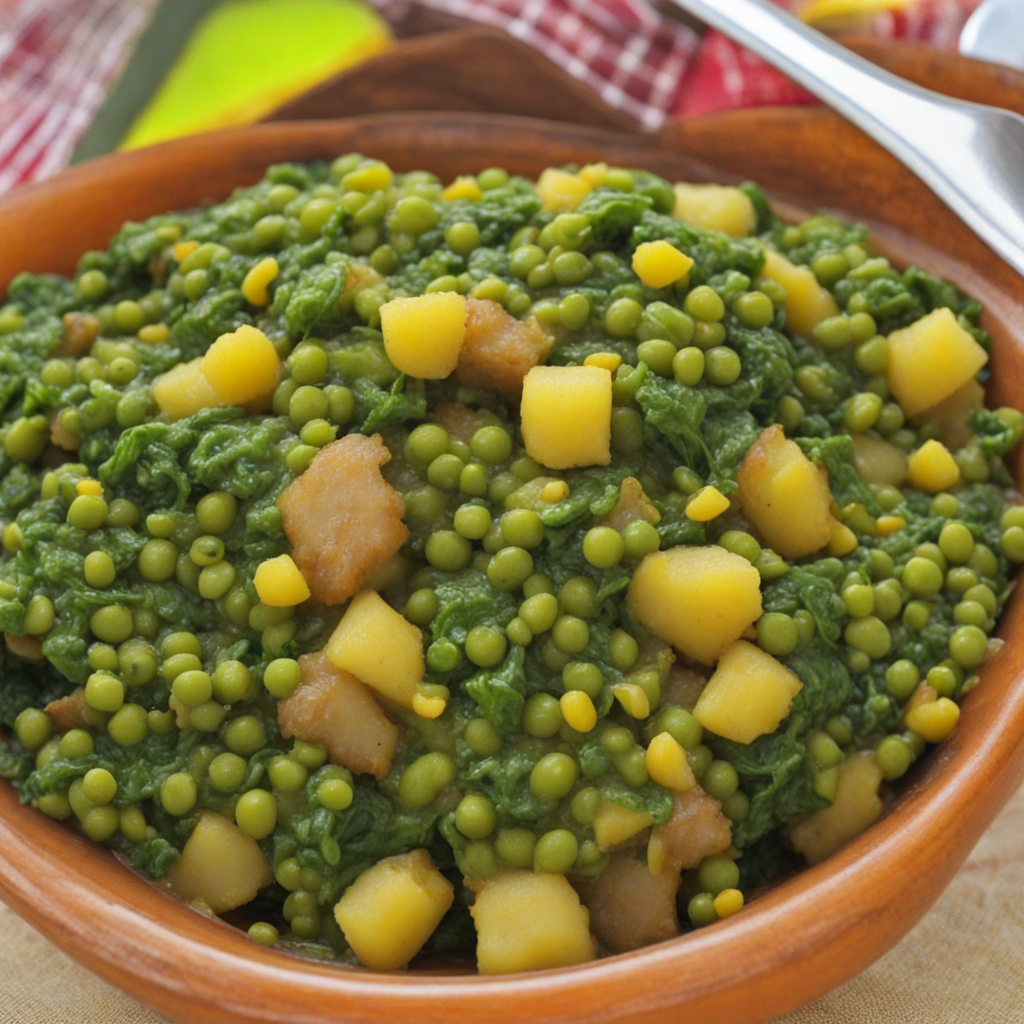Nyama Choma
Nyama Choma, which translates to "grilled meat" in Swahili, is a beloved Kenyan dish that tantalizes the taste buds with its smoky flavors and succulent texture. This dish typically features cuts of beef, goat, or chicken that are marinated with a blend of spices, herbs, and sometimes citrus, before being expertly grilled over an open flame. The grilling process infuses the meat with a rich, charred flavor while retaining its natural juiciness, creating a mouthwatering experience that celebrates the essence of outdoor cooking. Accompanying Nyama Choma is often a vibrant array of side dishes that enhance the overall dining experience. Ugali, a staple cornmeal porridge, provides a hearty base that balances the rich meat. Additionally, kachumbari, a fresh salad made from tomatoes, onions, and chilies, adds a zesty crunch that complements the smoky meat perfectly. This combination of flavors and textures makes each bite a delightful experience, capturing the spirit of communal dining that is central to Kenyan culture. Nyama Choma is more than just a meal; it is a social event that brings people together. Commonly enjoyed at gatherings, barbecues, or roadside eateries known as "nyama choma joints," this dish embodies the warmth and hospitality of Kenyan culture. As you savor the grilled meat and sides, you’ll find yourself immersed in the lively atmosphere filled with laughter, music, and the irresistible aroma of charcoal grilling, making it a feast for both the palate and the senses.
How It Became This Dish
Origin of Nyama Choma Nyama Choma, which translates to "grilled meat" in Swahili, is more than just a dish; it is an integral part of Kenyan culinary culture. The origins of Nyama Choma can be traced back to the traditional pastoral communities of Kenya, particularly the Maasai, who have long been known for their cattle herding practices. The Maasai people hold cattle in high esteem, not only as a source of sustenance but also as a symbol of wealth and status. Traditionally, the Maasai would roast meat over an open fire during celebrations and communal gatherings, making it a centerpiece of their social and cultural rituals. As Kenya evolved and its various ethnic groups interacted, the practice of grilling meat became widespread. The influence of different communities, including the Kikuyu, Luo, and Luhya, contributed to the diverse methods of preparation and the variety of meats used in Nyama Choma. While beef is the most common choice, goat and chicken are also popular options, reflecting the agricultural practices and preferences of different regions in the country. Cultural Significance Nyama Choma is deeply embedded in Kenyan culture and identity. It transcends mere sustenance, becoming a social event that fosters community and connection. Families and friends often gather around a grill, sharing stories, laughter, and camaraderie while enjoying this flavorful dish. It is common to find Nyama Choma at celebrations such as weddings, birthdays, and public holidays, making it a symbol of festivity and togetherness. The dish is usually accompanied by various side dishes, such as ugali (a cornmeal porridge), kachumbari (a fresh tomato and onion salad), and sukuma wiki (collard greens). These accompaniments highlight the communal aspect of dining, where sharing food strengthens bonds among participants. The act of grilling meat itself is often seen as a rite of passage for men in many communities, symbolizing masculinity and skill in cooking, while women often partake in preparing the side dishes and serving. Development Over Time Over the decades, Nyama Choma has evolved with the changing social landscape in Kenya. In urban areas, particularly in cities like Nairobi and Mombasa, Nyama Choma has transformed into a popular street food, with numerous roadside eateries and specialized restaurants dedicated to this dish, known as "nyama choma joints." These establishments attract a wide clientele, from locals to tourists, and have made Nyama Choma accessible to all social classes. The rise of tourism in Kenya has also played a significant role in the development of Nyama Choma. As visitors flock to the country to experience its rich culture and diverse wildlife, they often seek authentic culinary experiences. Nyama Choma has become a must-try dish for tourists, showcasing the flavors of Kenya and offering a glimpse into the country's traditions. Many establishments have adapted their offerings to cater to this influx, introducing fusion styles that incorporate international flavors while still retaining the essence of the dish. Modern Variations As Nyama Choma continues to gain popularity, innovative variations have emerged. While the traditional method involves grilling over open flames, contemporary chefs experiment with different cooking techniques and marinades. Some incorporate local spices and herbs, while others draw inspiration from global grilling practices, such as barbecuing. These modern adaptations not only enhance the flavor profiles but also reflect the dynamic nature of Kenyan cuisine. In addition to the evolution of preparation methods, the choice of meat has also diversified. While beef remains the staple, there is a growing interest in using game meat, such as zebra or antelope, in specific regions where it is legally sourced. This trend speaks to the increasing awareness and appreciation of Kenya's rich biodiversity and culinary heritage. Nyama Choma in the Global Context The global interest in Nyama Choma has also been fueled by the rise of food media and social platforms. Food bloggers and influencers showcase their experiences with Nyama Choma, sharing recipes and grilling techniques that reach a broader audience. This exposure has not only elevated its status but also sparked a curiosity about Kenyan cuisine as a whole. Moreover, Nyama Choma's popularity outside Kenya has led to the establishment of Kenyan restaurants in various parts of the world, particularly in major cities with significant Kenyan diaspora populations. These establishments serve as cultural hubs, allowing expatriates to connect with their roots while introducing Kenyan flavors to a diverse clientele. The dish has thus become a culinary ambassador, representing Kenya’s rich cultural tapestry abroad. Conclusion Nyama Choma is more than just a dish; it is a symbol of community, tradition, and the rich cultural heritage of Kenya. From its pastoral origins among the Maasai to its status as a beloved street food and culinary icon, Nyama Choma has adapted and evolved over time while remaining true to its roots. As it continues to develop and gain recognition both locally and globally, Nyama Choma serves as a reminder of the power of food to bring people together and celebrate shared experiences. The smoky aroma of grilled meat, the vibrant colors of accompanying dishes, and the laughter shared around the grill are all testaments to the enduring legacy of this cherished Kenyan delicacy.
You may like
Discover local flavors from Kenya


